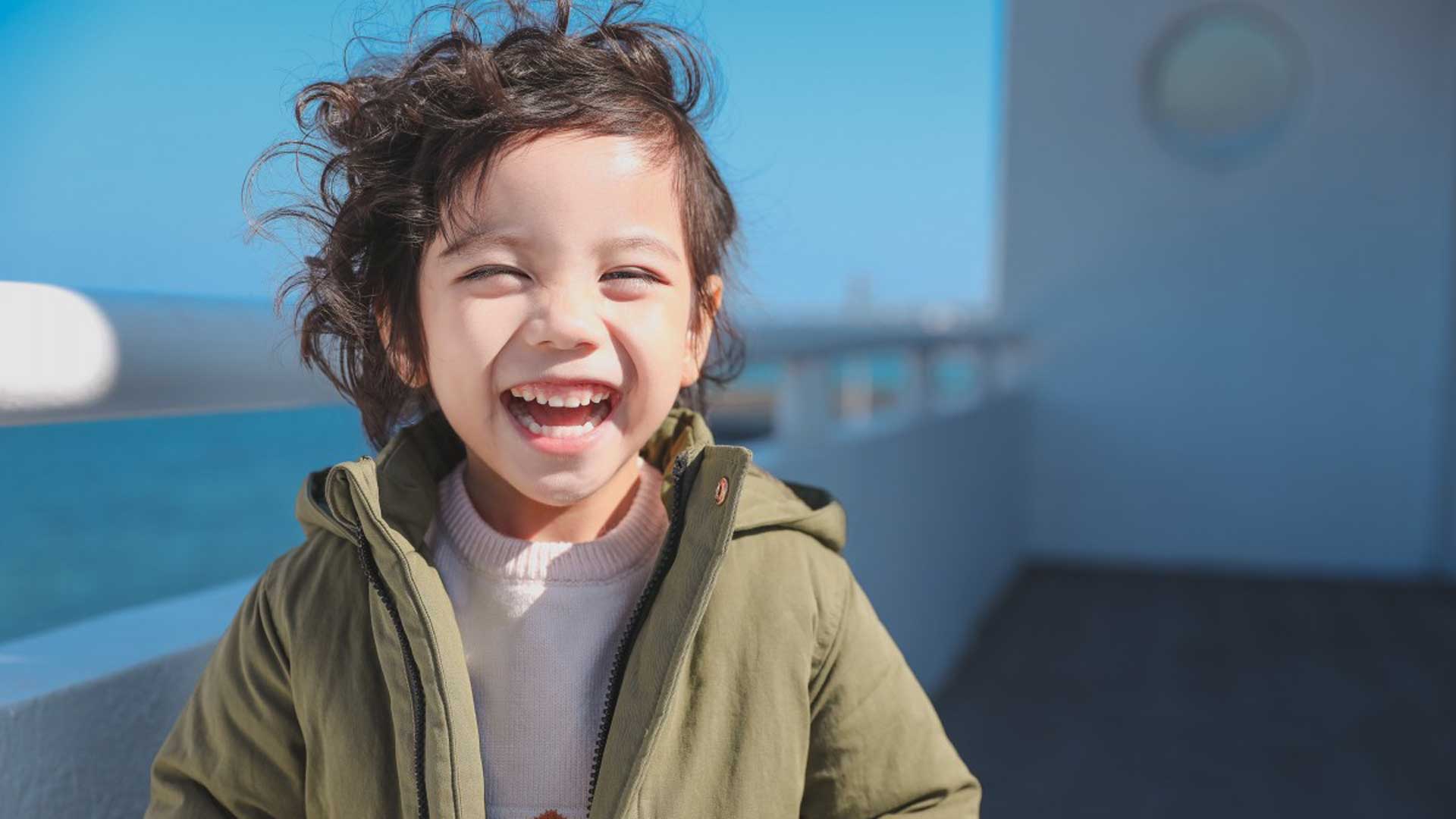 A child smiling.
A child smiling.
Four years ago, I asked my daughter, who was four years old at the time, to help me create a giant tree on our family room wall. We used construction paper, tape, and stickers to get the job done and we talked about the importance of being thankful while we worked. With the trunk and limbs complete, we set to work on cutting leaves in a rainbow of colors.
Then we talked about gratitude.
This very first attempt at a thankful tree was meant to last from November to January. We added new leaves with words of gratitude scrawled across them almost every day during those months. By January, the tree was completely full. I took some photos before I began to dismantle the tree for the season so that we could revisit it throughout the year.
At the very moment that I reached for the leaf at the very top of the tree, a small voice stopped me in my tracks. It was my son, just three years old at the time. “Mommy, can we be thankful ALL year?” Needless to say, the tree still stands today. The leaves change shape and the words are more legible, but the tree still brings us together in gratitude throughout the year.
In the world of positive psychology, gratitude is strongly linked with happiness. When people practice acts of gratitude, they feel happy. In one study led by Dr. Robert A. Emmons and Dr. Michael E. McCullough, subjects who wrote down things they were grateful for that happened during the week for ten weeks were more optimistic and felt better about their lives than the subjects who wrote about daily irritations. They also exercised more and had fewer visits to a physician.
Gratitude fosters happiness, which enables people to cope with stress and setbacks. People who are grateful are likely to be more hopeful, energetic, empathic and helpful to others. They are also less likely to be depressed, anxious or envious of others. In short, practicing gratitude and holding on to positive emotions leads to greater overall happiness.
The question for parents is, how do we fit that into our already packed schedules? The truth is that if we want to raise happy kids, we have to learn to slow down and focus on what really matters in this world. Practicing gratitude is a great way to begin. Try a few of these strategies to help your family engage in meaningful discussions about gratitude.
Create a thankful tree.
Whether you craft a life-size tree for your wall or a smaller tree to display on your kitchen counter, creating and adding to a thankful tree is a great way to get the whole family involved. Try to add a few leaves each week and take turns reading them out loud. Encourage your kids to visit the tree for inspiration when they’re feeling low, and be sure to do the same when you’re having a hard day.
Start a gratitude jar.
Perhaps a tree sounds like a lot of work or you simply don’t have space for it. A gratitude jar is an excellent alternative and can be used throughout the year. It’s as simple as it sounds. You need a large clear jar, a stack of sticky notes and a pen. Have each family member write (or draw) something that they are grateful for a few times a week. It can be small things, like a shiny red apple, or big things, like time spent with a grandparent. At the end of the week, read the gratitude slips together as a family and soak up the positive emotions.
Write a letter of gratitude.
In this fast-paced high-tech world, the handwritten note is not as widely used as it once was. That’s a shame, really, because both writing and receiving notes of gratitude spikes happiness on both ends. Sit down as a family once a month and take the time to write notes to those you love and care about. Kids can write to friends or family far away or even in their own neighborhoods. Pre-writers can draw pictures to communicate their gratitude.
Consider handmade gifts.
Kids love to express their feelings for others through handmade gifts, like pictures and necklaces made from giant beads. Tap into this pint-sized expression of gratitude by baking cookies or muffins or cutting some flowers from your yard and arranging them in a jar for a neighbor or friend. Once families get into the gratitude habit, it becomes easier to make these family rituals part of the daily routine. Families are likely to experience greater happiness and less overall stress as a result. That’s something that will leave you feeling grateful.
Katie Hurley, LCSW, is a child and adolescent psychotherapist, parenting expert, and writer. She is the founder of “Girls Can!” empowerment groups for girls between ages 5-11. Hurley is the author of No More Mean Girls and The Happy Kid Handbook, and her work can be found in The Washington Post, Psychology Today, and US News and World Report.

By submitting your comments, you hereby give AZPM the right to post your comments and potentially use them in any other form of media operated by this institution.